I will admit in the past I have paid over $1,500 to get a tub surround replaced which could have been fixed with this solution. Since then I have learned a few things and one of those things is how to repair holes in a fiberglass surround ensuring a watertight surface and something that isn’t an eyesore.
For this project, I used Devcon Fiberglass, Porcelain, and Plastic Repair Kit, which was about a $13 investment, plus a few other tools I already had in my garage (see below). While the process is fairly easy, it does take a little patience when it comes to sanding the surface for a smooth finish.
Note: You can also use the epoxy on cracks and other small knicks in your tub surrounds – it’s not just for screw holes.
If you’d rather watch than read, check out the YouTube video below.👇
Tools:
- Devcon Repair Kit (White/Almond) ** this works on fiberglass, porcelain, and plastic
- Sandpaper (Assorted)
- Painter’s Tape
- 1-gallon ziplock bag (cut it into square sheets)
- Toothpicks
DISCLAIMER: This blog contains affiliate links, which means that if you click on one of the product links, I’ll receive a small commission.
How to Patch and Filling Screw Holes in a Fiberglass Bathtub – 7 Steps
For this example, I was patching screw holes left behind after I removed a glass shower door from my tub/shower surround. Overall I had a total of 6 holes to fill and I ordered 2 kits and did 1 side (3 holes) at a time. This Playlist shows the whole project on our YouTube Channel.
1. Section Off Area with Painter’s Tape
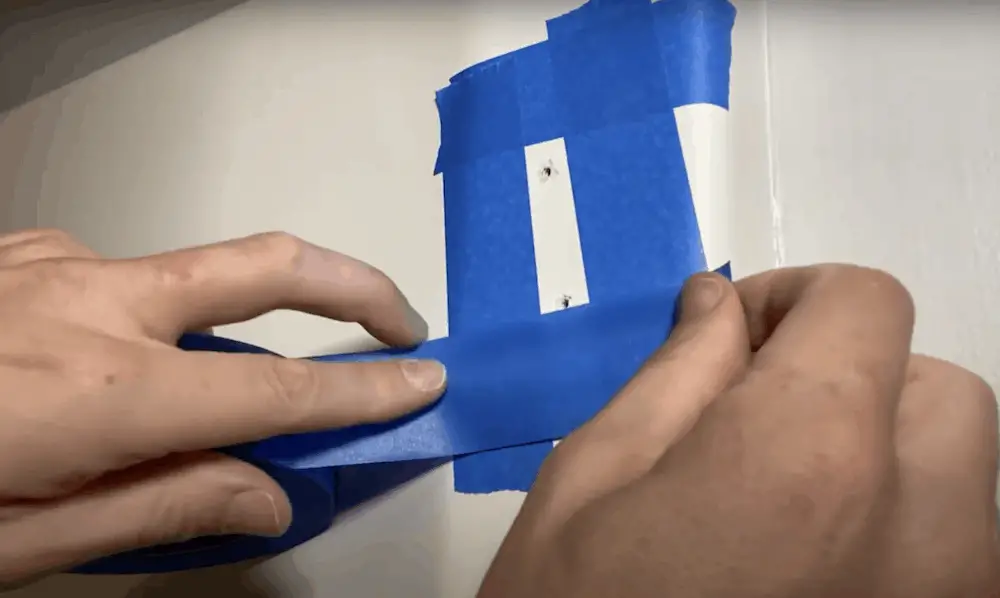
Before you do anything with the epoxy kit, prep the surface by sectioning off the holes with painter’s tape. I like to make a box shape around each hole. This will contain the epoxy when it runs and it will help later on when you start sanding the area. Also, ensure the surface has no loose pieces and is completely clean of any oils or residue.
2. Squeeze & Mix the Epoxy

With the Devcon Repair Kit, press the epoxy from the bottom of the packet. Continue to mix it with your hands for about 45 seconds to ensure you have a complete mix. (I then added the almond color to the epoxy since my bathtub is almond-colored.)
Warning: You only have about 5 minutes of working time before the epoxy starts to firm up so make sure you have everything ready once you get to this step.
3. Fill in Screw Holes with Epoxy
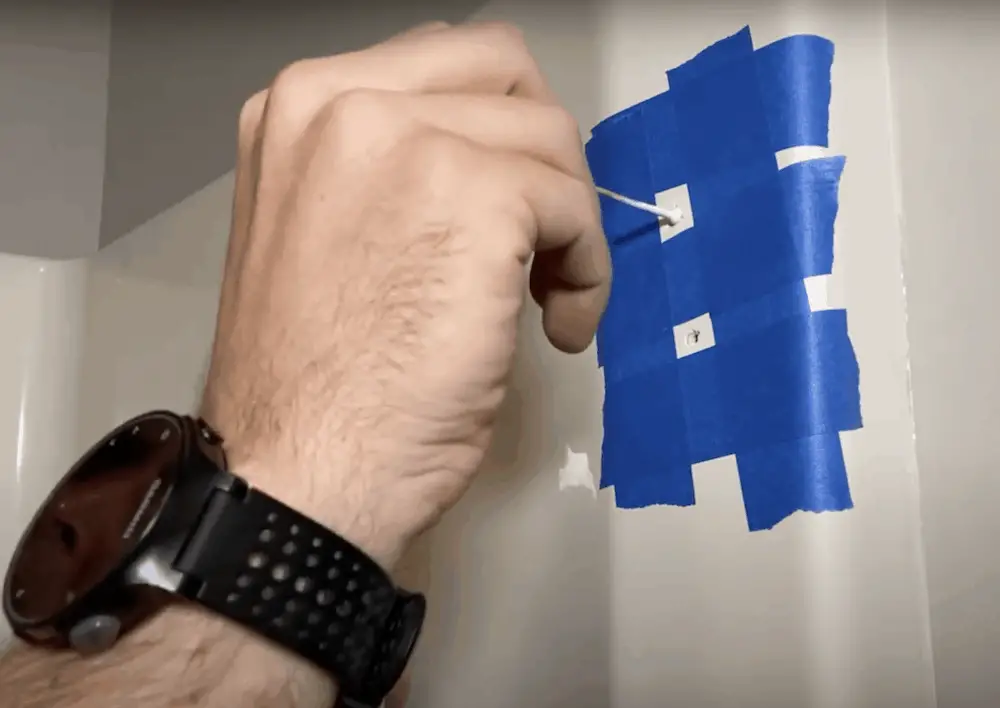
Using the toothpick, place the epoxy directly in the screw holes. It’s ok if it drips out a little. You’ll be adding more epoxy in the next step. Since my holes were small I only used epoxy if you have a larger hole and need additional strength the kit will come with some fiber mesh to cover the larger hole and provide the additional strength once dry.
4. Brush Extra Epoxy on Holes

Brush and spread out the epoxy. Be sure to build it up so you have a little extra. Don’t worry, I know it looks gunky! You’ll use the ziplock plastic sheets to smooth it out in the next step.
5. Place Plastic on the Epoxy and Tap Over Them
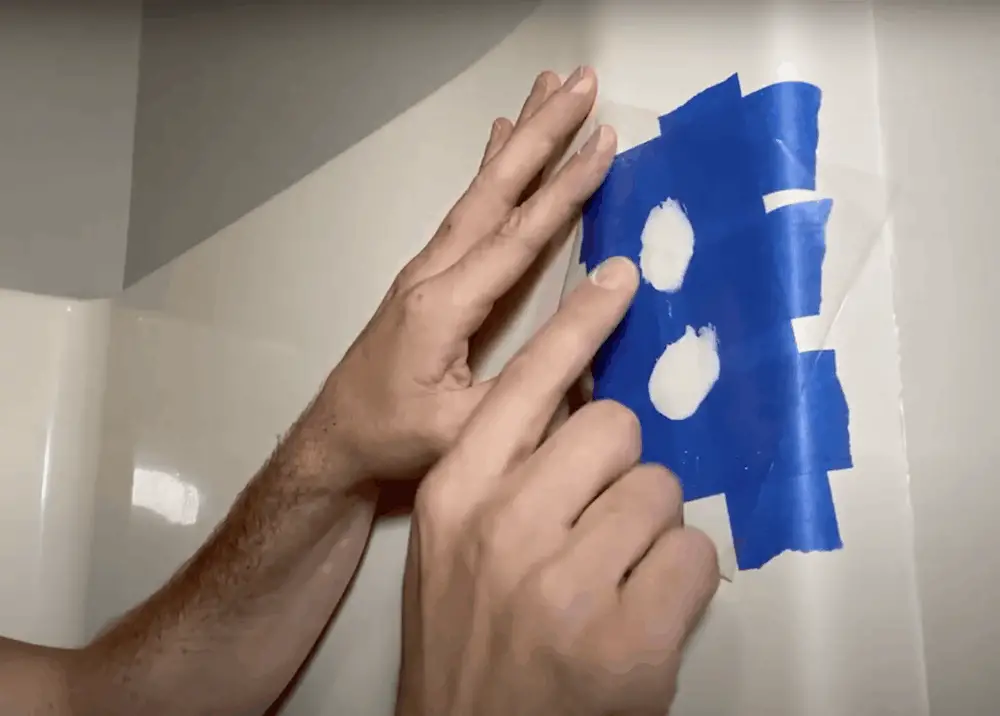
Place the plastic sheet over the holes filled with epoxy. Then, tap over the area to get the air bubbles out and smooth out the surface. Don’t worry once everything is dry (I let it sit for 2-3 hours) the ziplock bad will come right off without any issue.
6. Sandpaper Over the Holes
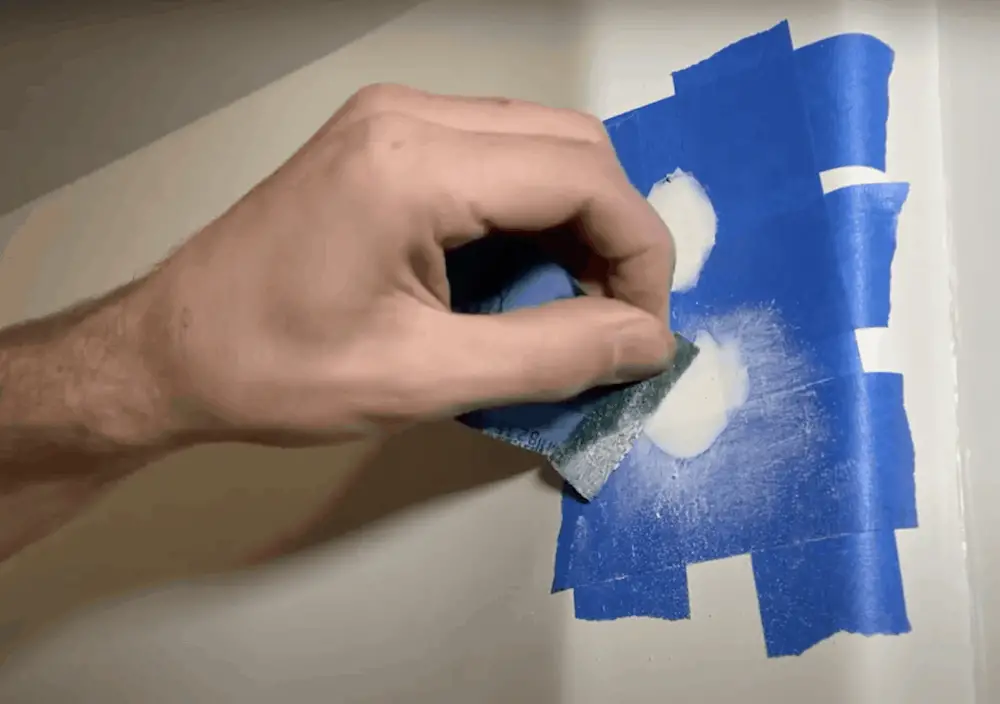
Remove the plastic sheet and sand over the epoxy with 60 grit sandpaper. This is the roughest sandpaper I used and is meant to quickly remove the excess epoxy. Do not sand the surface of your tub surround with this sandpaper or it will remove the finish.
7. Peel Tape Off & Sandpaper Again
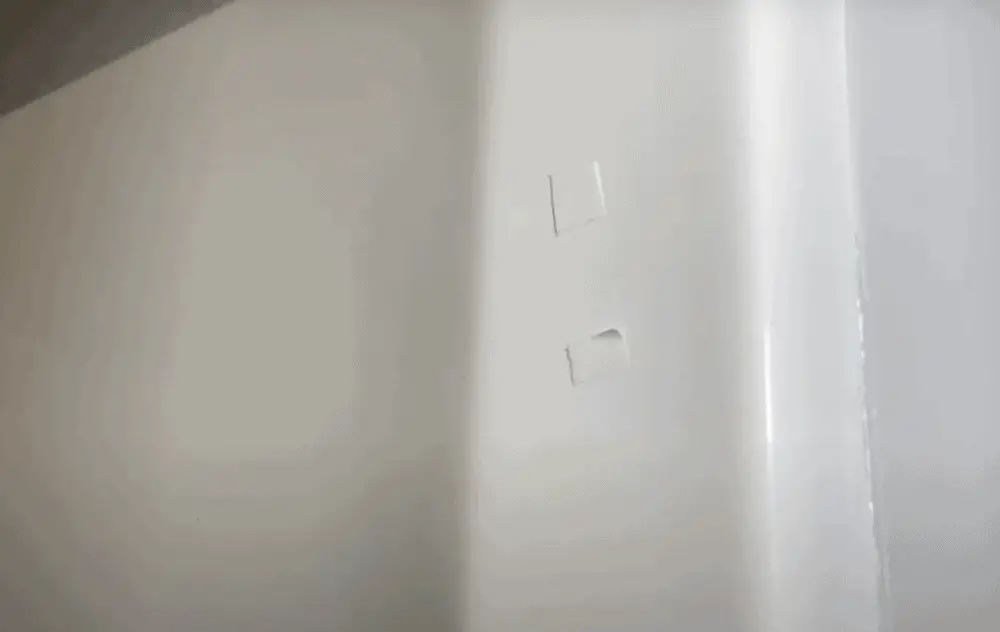
Peel the painter’s tape off and go back over the epoxy with more sandpaper. Switch to 320 grit sandpaper and continue to sand. Finally, switch again to 600 grit and continue to sand until smooth.
Pro tip: Add a little water to the surface as you’re sanding for the smoothest finish.
The Wrap Up
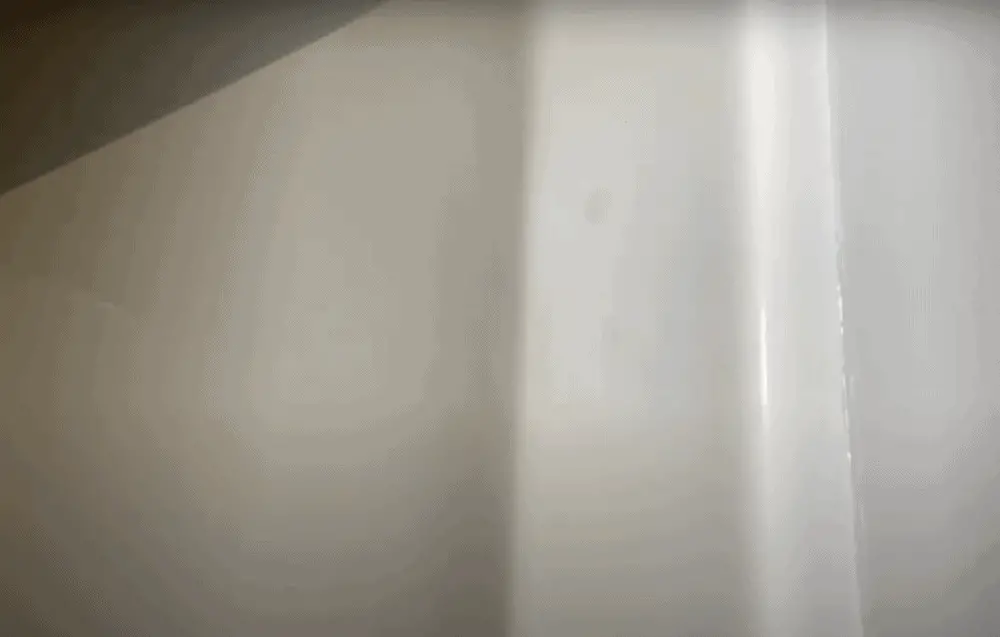
Overall, I was pleasantly surprised with the Devcon Epoxy Bathtub Repair Kit. The almond finish matched surprisingly well and I was happy with the flush finish. I also ended up putting a curtain rod up, which made the patched-up holes barely noticeable. But let me know what you think. If you’ve tried this project, feel free to share what worked for you in the comments below… or let me know what you’d do differently.



